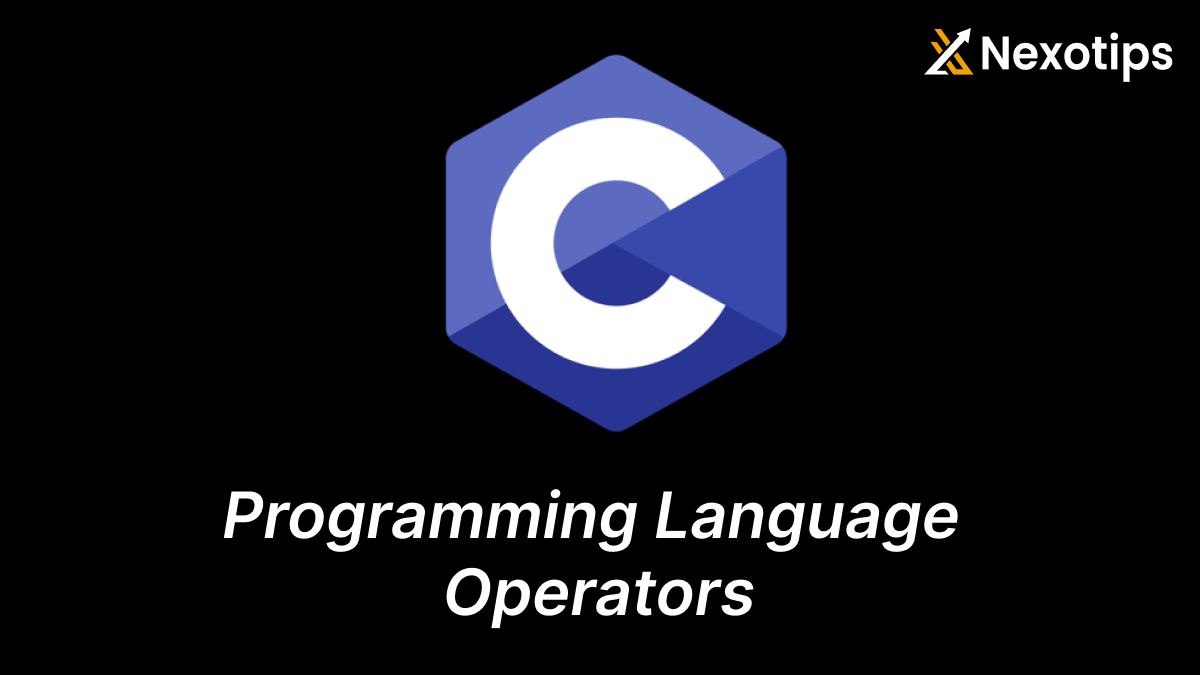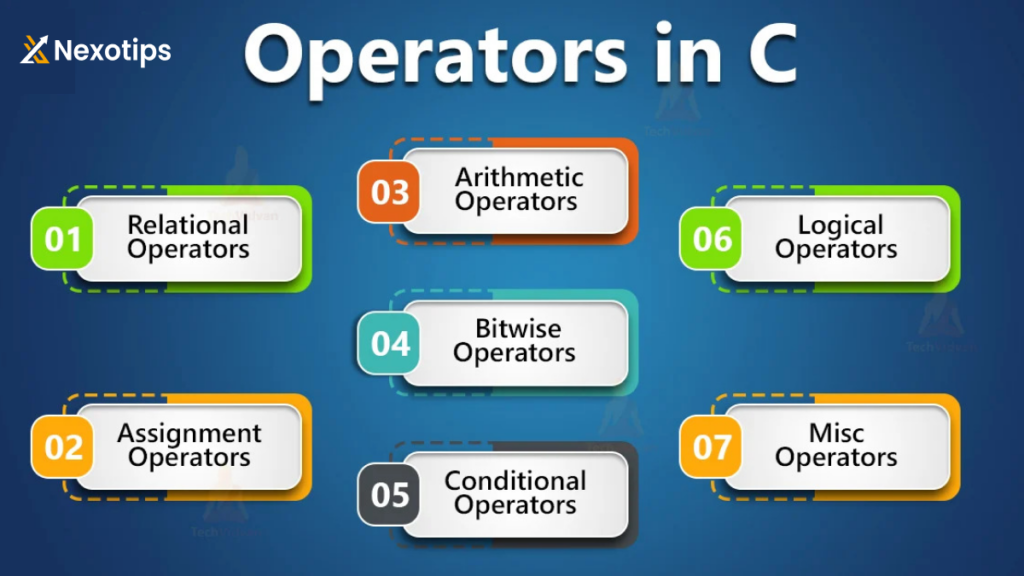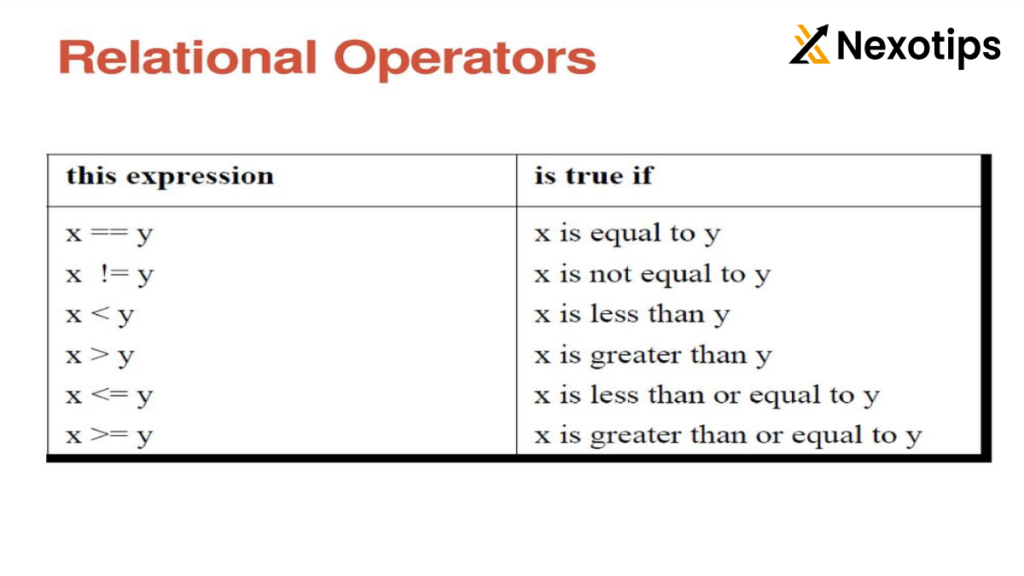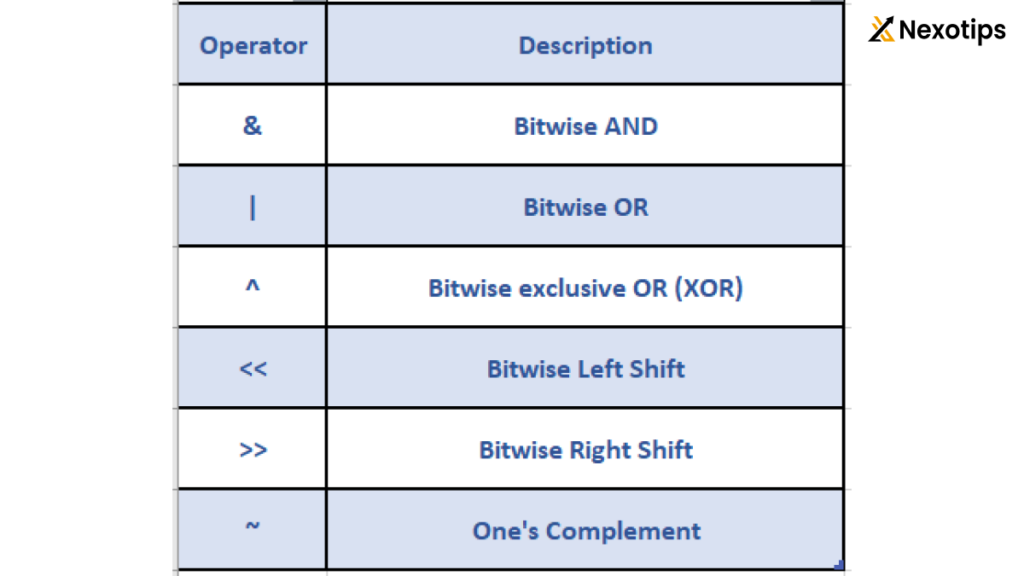
C Operators in the C Programming Language: A Comprehensive Guide
C Operators
C is one of the most powerful and efficient programming languages that serve as the foundation for many other languages. It is widely used for system-level programming and provides fine-grained control over hardware, memory, and processor. One of the fundamental aspects of the C programming language is its rich set of operators. This blog aims to provide an in-depth understanding of C operators, their types, usage, and best practices, ensuring an SEO-friendly, comprehensive guide for beginners and experienced programmers alike.
Index.
1. Introduction to C Operators
Operators in C are special symbols or keywords that are used to perform operations on variables and values. They form the core of any programming task, enabling developers to manipulate data, perform calculations, and control the flow of the program. Operators in C can be classified into several categories based on the type of operation they perform.

2. Arithmetic Operators
Basic mathematical operations including addition, subtraction, multiplication, division, and modulus are carried out using arithmetic operators. These operators are fundamental to any programming language.
- Addition (
+): Adds two operands. - Subtraction (
-): subtracts the first operand from the second. - Multiplication (
*): Multiplies two operands. - Division (
/): splits the first operand in half with the second. - Modulus (
%): Returns the remainder of the division of the first operand by the second.
Example:
int a = 10, b = 5;
int sum = a + b; // sum = 15
int diff = a - b; // diff = 5
int prod = a * b; // prod = 50
int quotient = a / b; // quotient = 2
int remainder = a % b; // remainder = 03. Relational C Operators
Relational operators are used to compare two values. They return a boolean result, either true or false, depending on the condition.
- Equal to (
==): Checks if two operands are equal. - Not equal to (
!=): Checks if two operands are not equal. - Greater than (
>): determines whether the first operand is larger than the second. - Less than (
<): Checks if the first operand is less than the second. - Greater than or equal to (
>=): determines whether the first operand is equal to or greater than the second. - Less than or equal to (
<=): Checks if the first operand is less than or equal to the second.
Example:
int a = 10, b = 5;
bool result;
result = (a == b); // result = false
result = (a != b); // result = true
result = (a > b); // result = true
result = (a < b); // result = false
result = (a >= b); // result = true
result = (a <= b); // result = false
4. Logical C Operators
Logical operators are used to perform logical operations, combining multiple conditions to return a boolean result.
- Logical AND (
&&): if both operands are true, returns true. - Logical OR (
||): returns true in the event that each operand has a true value. - Logical NOT (
!): Reverses the boolean state of its operand.
Example:
bool a = true, b = false;
bool result;
result = (a && b); // result = false
result = (a || b); // result = true
result = !a; // result = false
result = !b; // result = true5. Bitwise C Operators
Bitwise operators are used to perform operations on individual bits of integer data types. These operators are useful in low-level programming, such as system programming and embedded systems.
- Bitwise AND (
&): Performs AND operation on each bit of the operands. - Bitwise OR (
|): Performs OR operation on each bit of the operands. - Bitwise XOR (
^): Performs XOR operation on each bit of the operands. - Bitwise NOT (
~): flips every bit in the operand. - Left shift (
<<): moves the operand’s bits left by the provided number of places. - Right shift (
>>): moves the operand’s bits the designated number of positions to the right.
Example:
int a = 5; // binary: 0101
int b = 3; // binary: 0011
int result;
result = a & b; // result = 1 (binary: 0001)
result = a | b; // result = 7 (binary: 0111)
result = a ^ b; // result = 6 (binary: 0110)
result = ~a; // result = -6 (binary: 1010 in 2's complement)
result = a << 1; // result = 10 (binary: 1010)
result = a >> 1; // result = 2 (binary: 0010)
6. Assignment C Operators
Variable values are assigned using assignment operators. C offers compound assignment operators, which combine bitwise or arithmetic operations with assignment, in addition to the basic assignment operator (=).
- Simple assignment (
=): Assigns the right-hand operand to the left-hand variable. - Add and assign (
+=): Adds the right-hand operand to the left-hand variable and assigns the result to the left-hand variable. - Subtract and assign (
-=): Subtracts the right-hand operand from the left-hand variable and assigns the result to the left-hand variable. - Multiply and assign (
*=): Multiplies the left-hand variable by the right-hand operand and assigns the result to the left-hand variable. - Divide and assign (/=): This operator divides the variable on the left by the operand on the right, then assigns the result to the variable on the left.
- Modulus and assign (
%=): Applies modulus on the left-hand variable with the right-hand operand and assigns the result to the left-hand variable. - Bitwise AND and assign (
&=): Applies bitwise AND on the left-hand variable with the right-hand operand and assigns the result to the left-hand variable. - Bitwise OR and assign (
|=): Applies bitwise OR on the left-hand variable with the right-hand operand and assigns the result to the left-hand variable. - Bitwise XOR and assign (
^=): Applies bitwise XOR on the left-hand variable with the right-hand operand and assigns the result to the left-hand variable. - Left shift and assign (
<<=): Shifts the bits of the left-hand variable to the left by the specified number of positions and assigns the result to the left-hand variable. - Right shift and assign (
>>=): Shifts the bits of the left-hand variable to the right by the specified number of positions and assigns the result to the left-hand variable.
Example:
int a = 10;
a += 5; // a = 15
a -= 3; // a = 12
a *= 2; // a = 24
a /= 4; // a = 6
a %= 3; // a = 0
a &= 1; // a = 0
a |= 2; // a = 2
a ^= 3; // a = 1
a <<= 1; // a = 2
a >>= 1; // a = 17. Conditional C Operators
The sole operator in C that accepts three operands is the conditional operator, sometimes referred to as the ternary operator. It is used to evaluate a condition and return one of two values based on the result of the condition.
- Conditional (
?:): Evaluates a condition; if true, returns the first value, otherwise returns the second value.
Example:
int a = 10, b = 5;
int max;
max = (a > b) ? a : b; // max = 108. Special C Operators
C provides several special operators to handle specific scenarios.
- Sizeof operator: Provides a variable’s or data type’s size in bytes.
- Comma operator (
,): Used to separate expressions, evaluating them from left to right and returning the value of the rightmost expression. - Pointer operators (
*and&):*is used to declare and dereference pointers, and&is used to get the address of a variable. - Member access operators (
.and->): Used to access members of structures and unions..is used with objects, and->is used with pointers to objects.
Example:
int a = 10;
int size = sizeof(a); // size = 4 (assuming 4-byte integers)
int b, c;
b = (a =
5, a + 10); // b = 15, a = 5
int *ptr = &a; // ptr holds the address of a
int value = *ptr; // value = 5 (value at the address of a)
struct Point {
int x;
int y;
};
struct Point p = {10, 20};
struct Point *ptr_p = &p;
int x = p.x; // x = 10
int y = ptr_p->y; // y = 209. Operator Precedence and Associativity
The order in which operators are evaluated in an expression is determined by operator precedence. Higher precedence operators are evaluated before lower precedence operators. Associativity determines the order of evaluation when operators of the same precedence appear in an expression.
Precedence and Associativity Table:
| Precedence Level | Operators | Associativity |
|---|---|---|
| 1 (highest) | () [] -> . | Left to right |
| 2 | ! ~ ++ -- + - * & (type) sizeof | Right to left |
| 3 | * / % | Left to right |
| 4 | + - | Left to right |
| 5 | << >> | Left to right |
| 6 | < <= > >= | Left to right |
| 7 | == != | Left to right |
| 8 | & | Left to right |
| 9 | ^ | Left to right |
| 10 | | | Left to right |
| 11 | && | Left to right |
| 12 | || | Left to right |
| 13 | ?: | Right to left |
| 14 | = += -= *= /= %= &= |= ^= <<= >>= | Right to left |
| 15 (lowest) | , | Left to right |
10. Practical Examples and Use Cases
Let’s explore some practical examples and use cases to understand how these operators are utilized in real-world programming.
Example 1: Calculating Factorial
#include <stdio.h>
int factorial(int n) {
int result = 1;
for (int i = 1; i <= n; i++) {
result *= i;
}
return result;
}
int main() {
int number = 5;
printf("Factorial of %d is %d\n", number, factorial(number));
return 0;
}Example 2: Swapping Two Numbers
#include <stdio.h>
int main() {
int a = 10, b = 5;
printf("Before swapping: a = %d, b = %d\n", a, b);
// Using arithmetic operators
a = a + b; // a = 15
b = a - b; // b = 10
a = a - b; // a = 5
printf("After swapping: a = %d, b = %d\n", a, b);
return 0;
}Example 3: Bitwise Operations
#include <stdio.h>
int main() {
unsigned char a = 5, b = 9;
printf("a & b = %d\n", a & b); // Output: a & b = 1
printf("a | b = %d\n", a | b); // Output: a | b = 13
printf("a ^ b = %d\n", a ^ b); // Output: a ^ b = 12
printf("~a = %d\n", ~a); // Output: ~a = 250 (assuming 8-bit unsigned char)
printf("b << 1 = %d\n", b << 1); // Output: b << 1 = 18
printf("b >> 1 = %d\n", b >> 1); // Output: b >> 1 = 4
return 0;
}11. Conclusion
Operators are the building blocks of any programming language, enabling developers to perform a wide range of operations, from simple arithmetic to complex bitwise manipulations. In C, understanding operators, their precedence, and associativity is crucial for writing efficient and error-free code. This comprehensive guide has covered all major categories of C operators, providing detailed explanations and practical examples to help you master their usage.
By leveraging the power of operators, you can optimize your code, enhance its readability, and ensure that your programs run efficiently. Keep practicing and experimenting with different operators to deepen your understanding and improve your programming skills in C.
Others: Understanding Data Types In C Programming Language
